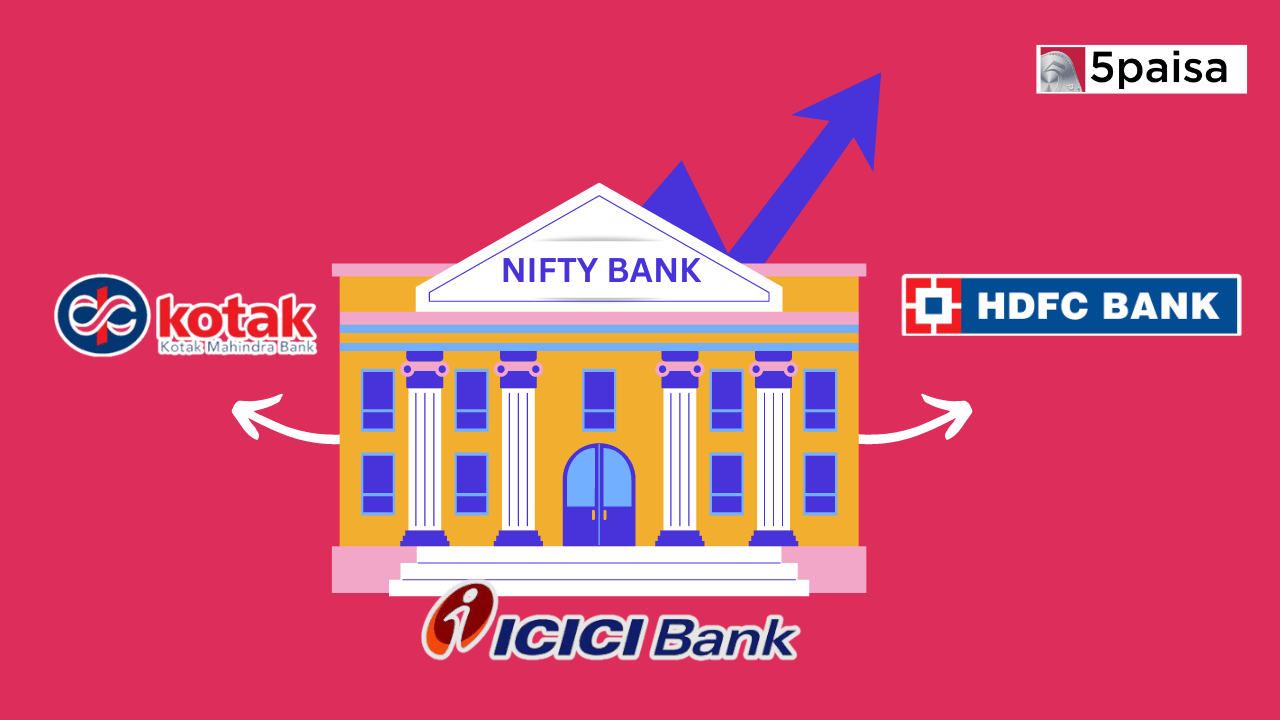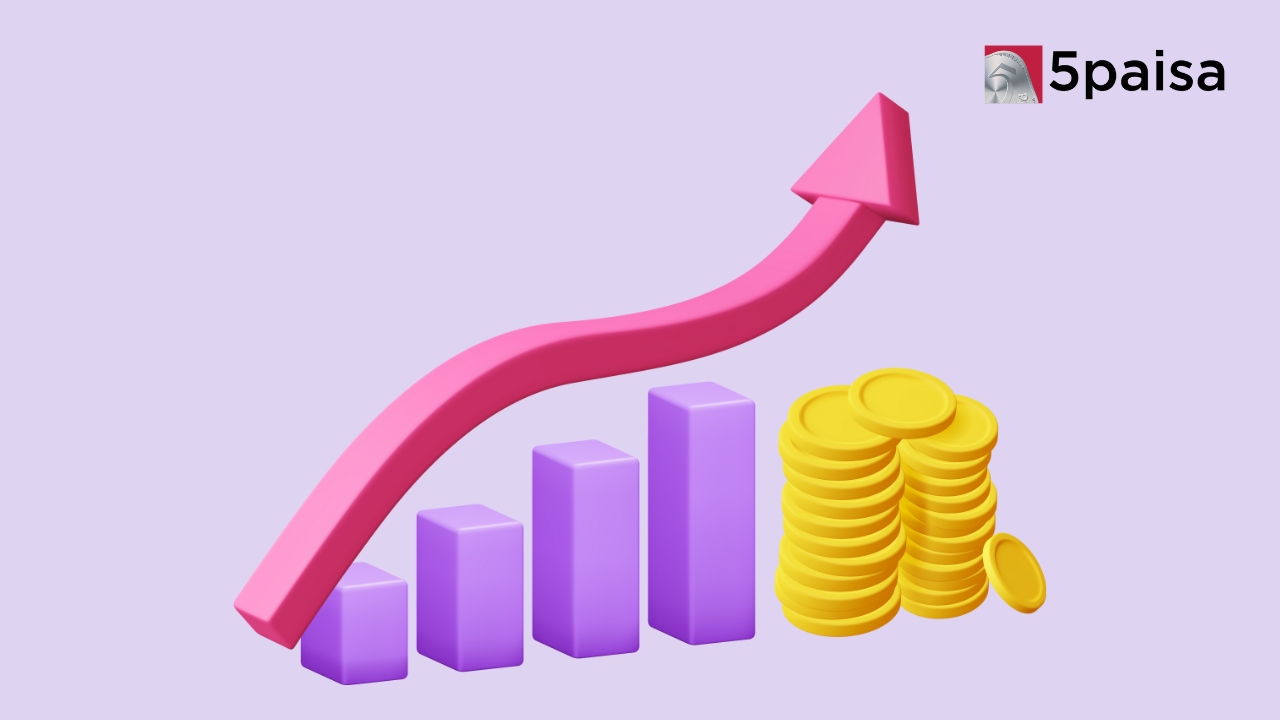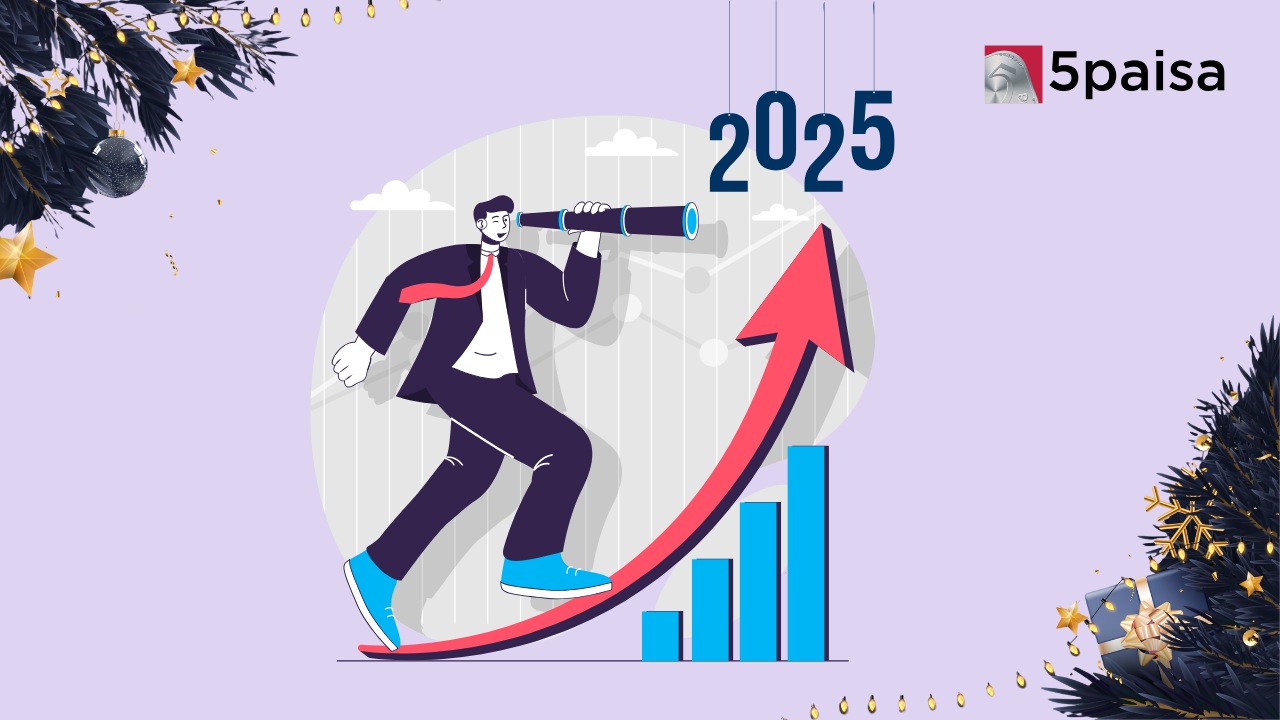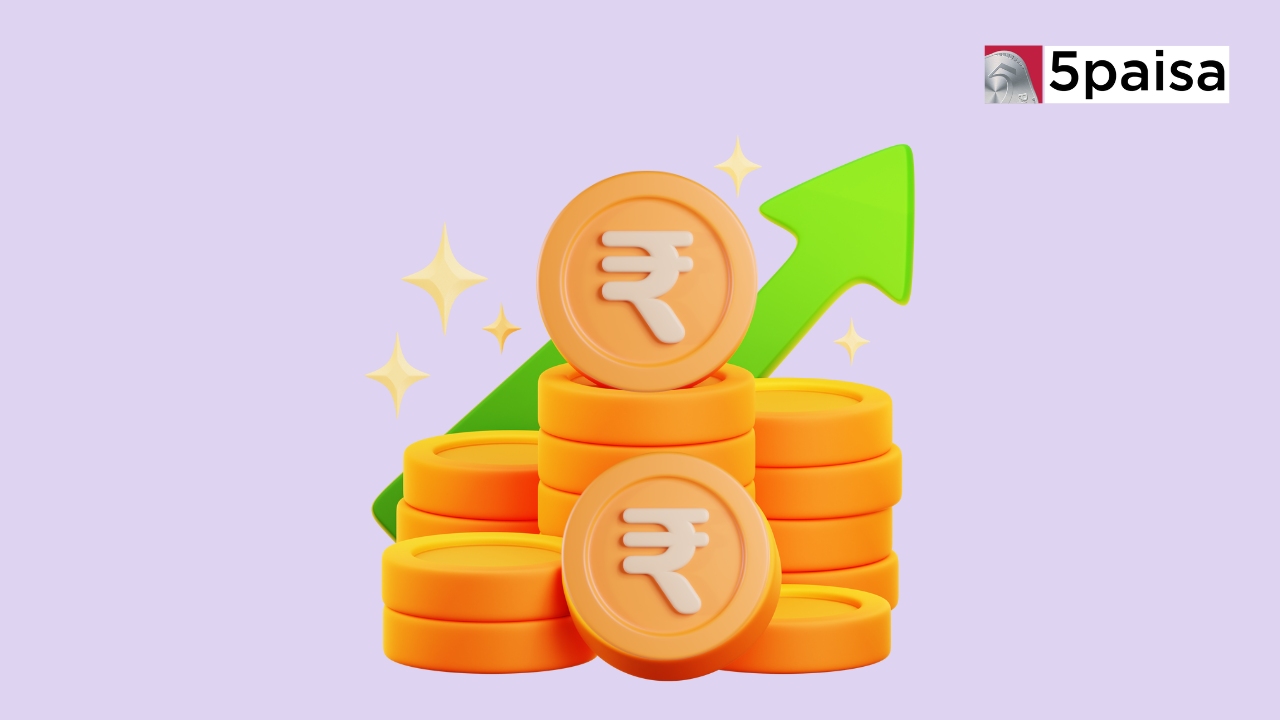Top 3 Bank Nifty Stocks

Last Updated: 5th June 2024 - 03:15 pm
When analysing banking stocks, one of the key ratios that investors and analysts often look for is the Price-to-Book (P/B) ratio. The Price-to-Book ratio compares a bank's market value (its share price) to its book value (the net asset value per share). It is calculated by dividing the market price per share by the book value per share.
The formula for the Price-to-Book ratio is as follows:
P/B Ratio = Market Price per Share / Book Value per Share
Here's what it tells us:
a) Valuation: The P/B ratio helps to assess whether a bank's stock is undervalued or overvalued in relation to its book value. A P/B ratio less than 1 suggests the stock may be undervalued, while a P/B ratio greater than 1 indicates it may be overvalued. However, the interpretation of this ratio varies depending on the industry and the specific bank's characteristics.
b) Asset Coverage: The P/B ratio gives an idea of how well the bank's assets could theoretically cover its liabilities. A P/B ratio below 1 suggests that the market values the bank at less than the value of its assets, which could indicate concerns about the bank's financial health.
c) Risk Assessment: It can be used as a rough indicator of risk. A lower P/B ratio may imply higher perceived risks in the bank's operations or asset quality, while a higher P/B ratio might signal investor confidence and lower perceived risks.
d) Comparison: Investors often use the P/B ratio to compare a bank's valuation with that of its peers in the industry. It provides a basis for comparing similar banks based on their relative book values.
1. Kotak Mahindra Bank
Kotak Mahindra Bank is a diversified financial services group providing a wide range of banking and financial services including Retail Banking, Treasury and Corporate Banking, Investment Banking, Stock Broking, Vehicle Finance, Advisory services, Asset Management, Life Insurance and General Insurance
Key Highlights:
I. Steady Loan Growth: KMB experienced a steady increase in its loans, with a growth of 17% compared to the previous year. This growth was driven by targeted lending in areas like retail loans for payment products, microfinance, tractors, commercial vehicles, and home loans. A small portion of these loans (around 10.7%) was categorized as "unsecured" loans, which have a slightly higher risk.
II. Net Interest Margin (NIM) Decrease: The bank's net interest margin, which reflects the difference between interest income and interest expenses, declined slightly by 15 basis points (bps) compared to the previous quarter, reaching 5.1%. This decrease was due to higher deposit rates and an increased share of a product called "ActivMoney," which pays higher interest than regular savings accounts but lower than term deposits.
III. Stable Asset Quality: The bank maintained stable asset quality during Q1, with non-performing assets (bad loans) at 1.8% of total advances and net non-performing assets at 0.4%.
IV. Well-Capitalized Bank: KMB is in a strong financial position, with a capital adequacy ratio (CAR) of 22% and a common equity tier 1 (CET1) capital ratio of 20.9% in Q1.
Key Risk:
Although there were some loan defaults during the quarter (slippages), improvements in other areas helped keep the asset quality stable.
Financial Performance:
In the first quarter of FY24, the bank (KMB) showed strong profit growth of 67% compared to the same period last year, reaching ₹ 34.5 billion. This was supported by increased interest income (+33%) and other earnings (+115%), mainly from treasury gains and dividends received. However, operating expenses also grew by 26% compared to the previous year, leading to a slight increase in the bank's cost-to-income ratio.
Outlook:
The bank believes that the increase in unsecured loans may be contributing to higher credit costs, which they expect to normalize over time.
Financial Summary:
|
Y/E Mar (Cr) |
FY23 |
|
Net Sales |
42,151 |
|
Net Profit |
14,925 |
|
EPS (Rs) |
75.13 |
|
P/BV (x) |
5.93 |
|
P/E (x) |
49.84 |
|
NIM (%) |
5.1 |
|
CASA (%) |
58.1 |
Kotak Mahindra Bank Share Price:
2. ICICI Bank
A sizable private sector bank in India, ICICI Bank provides retail, SME, and corporate customers with a diverse range of financial products and services. There is a vast network of branches, ATMs, and other touch points for the Bank.
Key Highlights:
I. Healthy Loan Growth: ICICIBC achieved remarkable Net Interest Income (NII) growth (+38% YoY) driven by strong loan growth across various sectors. The unsecured retail segment, including Personal Loans and Credit Cards, has been particularly successful, accounting for 13% of the loan mix. The bank's loan yields benefited from an increase in repo-linked and MCLR portfolios, partially offset by deposit mobilization and repricing strategies.
II. Balanced Expansion Strategy: ICICIBC's focus on increasing its branch network and investing in technology and personnel has supported visible rise in incremental funding and operating costs.
III. Sustainable Growth Leadership: ICICI Bank's investment in digital and physical channels has positioned it well to sustain market share gains. Their approach to growth across various segments, including Small and Medium-sized Enterprises (SMEs), business banking, ecosystem banking, and new-to-bank customer funnels in retail banking, is likely to support healthy Return on Assets (RoA) exceeding 2%.
Key Risk:
Despite potential NIM compression due to the current interest rate environment, the bank's strong provisioning buffers and benign asset quality trends are expected to contain credit costs and protect medium-term return ratios
Financial Performance:
Company has delivered good profit growth of 34.6% CAGR over last 5 years
Outlook:
Company is expected to give good quarter
Financial Summary:
|
Y/E Mar (Cr) |
FY23 |
|
Net Sales |
1,21,067 |
|
Net Profit |
35,461 |
|
EPS (Rs) |
48.74 |
|
P/BV (x) |
4.86 |
|
P/E (x) |
18.7 |
|
NIM (%) |
4.7 |
|
CASA (%) |
48.69 |
ICICI Bank Share Price
3. HDFC Bank
The Housing Development Finance Corporation Limited (HDFC) was amongst the first to receive an 'in principle' approval from the Reserve Bank of India (RBI) to set up a bank in the private sector. HDFC Bank is a publicly held banking company, the bank was incorporated in August 1994 in the name of 'HDFC Bank Limited', with its registered office in Mumbai, India. It is engaged in providing a range of banking and financial services including retail banking, wholesale banking and treasury operations. It is promoted by HDFC Ltd. which has 19.32% stake as on September 30, 2020. Currently, HDFC Bank Ltd. (HDFCBANK) is the largest private sector bank in India.
Key Highlights:
HDFC Bank (HDFCBANK) reported a steady performance in Q1FY24. Key points to note are:
I. Net Interest Margin (NIM) contraction: The bank's focus on deposit mobilization and repricing led to a 13bps decrease in NIM to 4.1% compared to the previous quarter. However, management remains optimistic and maintains FY24 margin guidance at 3.9-4.1% due to a shift towards a higher share of retail loans in the portfolio.
II. Merged loan book and credit growth: The merged loan book increased by 18% YoY, with the retail and CRB (Corporate, Retail, and Business Banking) segments performing well. The bank expects credit growth of 17-18% YoY in FY24 and FY25.
III. Stable asset quality: Despite higher slippages, the bank's asset quality remained stable with Gross Non-Performing Assets (GNPA) at 1.17% and Net Non-Performing Assets (NNPA) at 0.3%. The credit cost remained steady.
Key Risk:
HDFCBANK saw deposits grow faster than loans. Term deposits rose significantly, while Current Account and Savings Account (CASA) growth was moderate, resulting in a decline in the CASA ratio to 42.5%. After the merger with HDFC, the deposit growth remained strong with a CASA ratio of 39%.
Financial Performance:
HDFCBANK's Profit After Tax (PAT) grew 30% YoY, supported by strong revenue and lower provisions.
Outlook:
I. Overall, HDFC Bank's performance remains strong post-merger, and the bank is expected to continue its growth trajectory with a focus on retail lending and maintaining healthy asset quality.
II. The bank's growth outlook is positive, and asset quality is expected to remain stable.
Financial Summary:
|
Y/E Mar (Cr) |
FY23 |
|
Net Sales |
1,70,754 |
|
Net Profit |
46,149 |
|
EPS (Rs) |
82.44 |
|
P/BV (x) |
3.93 |
|
P/E (x) |
26 |
|
NIM (%) |
4.1 |
|
CASA (%) |
42.5 |
HDFC Bank Share Price
Conclusion
In conclusion, all three banks, namely Kotak Mahindra Bank, ICICI Bank, and HDFC Bank, have showcased positive performances and demonstrate strong potential for investors. Kotak Mahindra Bank displayed healthy Q1 results with robust profit growth, steady loan growth, and stable asset quality. ICICI Bank stands out with remarkable loan growth, a balanced expansion strategy, and sustainable growth leadership. HDFC Bank reported steady performance, despite a slight NIM contraction, and maintains a positive growth outlook with a focus on retail lending and stable asset quality post-merger. These banks' prudent strategies, strong financial positions, and customer-centric innovation indicate a positive trajectory ahead, making them attractive investment options in the banking sector.
- Flat ₹20 Brokerage
- Next-gen Trading
- Advance Charting
- Actionable Ideas
Trending on 5paisa
Indian Stock Market Related Articles
Disclaimer: Investment in securities market are subject to market risks, read all the related documents carefully before investing. For detailed disclaimer please Click here.
 5paisa Research Team
5paisa Research Team
 Sachin Gupta
Sachin Gupta




